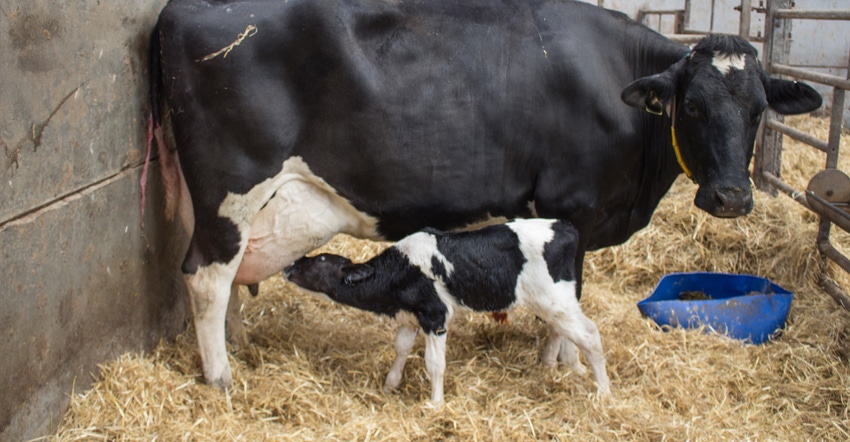December 13, 2018

Conventionally, colostrum from heifers having their first calf is regarded as lower quality in comparison to older cows.
On average, colostrum from first-lactation animals contains less immunoglobulins than older cows. However, colostrum from first-lactation animals should not immediately be discounted as inferior.
Because of the more aggressive vaccination programs on dairy farms today, first-lactation animals potentially have greater exposure than before. Additionally, heifers generally produce less colostrum volume and have less leaking prepartum than older cows, potentially resulting in colostrum that contains as many antibodies as colostrum from older cows.
Recently, the results of the National Animal Health Monitoring System’s Dairy 2014 study were published in the Journal of Dairy Science. This study included 1,972 heifer calves from 104 operations in 13 states.
Colostrum samples from this study validate that older cows have more immunoglobulin-rich colostrum (84.7 g/L on average). However, there was no difference between first- and second-lactation dams (average 72.3 and 72.0 g IgG/L, respectively).
Interestingly, when calves were fed their mother’s colostrum, calves from first-lactation dam’s had significantly higher serum IgG concentrations (25.7 g/L IgG) than calves that consumed colostrum from second and third lactation dams (24.1 and 22.4 g/L IgG respectively), despite the colostrum containing a lower concentration of IgG. Researchers were not able to identify the reason for this, but it could be related to lower birth weights in calves out of heifers.
The only way to know if colostrum is of high quality is to test it. Using a BRIX refractometer or a colostrometer, colostrum can quickly and easily be assessed for quality. For reference, colostrum containing at least 50 g/L IgG (22% on the BRIX scale) is considered high in antibodies. A field study from the University of Pennsylvania included 241 first-milking colostrum samples (from all lactations) that averaged 37.5 g/L IgG; however, the range was 9 to 166 g/L.
Neither color nor thickness are reliable indicators of IgG content. Similarly, there is no predictable relationship between volume of colostrum and IgG content when the first milking is immediately after calving. However, if the first milking is not immediately after calving, the cow begins producing milk, which dilutes the colostral IgG’s.
A study found that colostrum quality is diluted by an average of 3.7% per hour from calving to milking because a cow starts producing milk immediately after giving birth. This means that if a cow is first milked eight hours after calving, colostrum quality has been reduced via dilution by 29.6%.
Michigan State University Extension recommends testing colostrum to know if it contains enough IgG to use as a first feeding for calves. If colostrum tests lower than 22% BRIX, then it is still suitable to use as a second feeding. Don’t immediately discount colostrum from first lactation heifers, as it may be just as high of quality as colostrum from older cows.
Source: MSU Extension
You May Also Like




